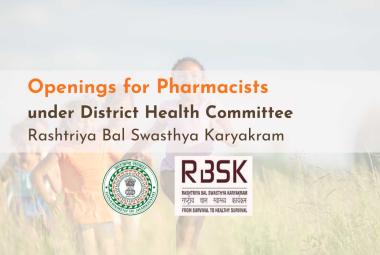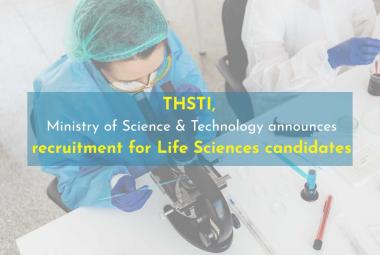ABOUT AUTHOR:
Jeevan Menaria*, Rahul Kumar Garg, Dr. Ashok Dashora
Geetanjali Institute Of Pharmacy,
Udaipur 313001
*jeevanmenaria@gmail.com
INTRODUCTION
Drug delivery system should deliver drug at a dictated by needs of the body over a specified period of time. The newer drug delivery system is being used to body distribution of drug with a view to reduce the toxicity of drug and deliver to their site of action. There are number of reason for the intense interest in development of drug delivery system. new system is needed to deliver peptide, pharmacogenomic, hormones, vaccines and other proteins to their specific site of action without incurring immunogenicity.
Reference Id: PHARMATUTOR-ART-1965
Floating drug delivery
Gastric emptying of dosage forms is an extremely variable process and ability to prolong and control the emptying time is a valuable asset for dosage forms, which reside in the stomach for a longer period of time than conventional dosage forms. Several difficulties are faced in designing controlled release systems for better absorption and enhanced bioavailability. One of such difficulties is the inability to confine the dosage form in the desired area of the gastrointestinal tract. Drug absorption from the gastrointestinal tract is a complex procedure and is subject to many variables. It is widely acknowledged that the extent of gastrointestinal tract drug absorption is related to contact time with the small intestinal mucosa. Thus, small intestinal transit time is an important parameter for drugs that are incompletely absorbed. Basic human physiology with the details of gastric emptying, motility patterns, and physiological and formulation variables affecting te cosmic ehmptying are summarized. Gastroretentive systems can remain in the gastric region for several hours and hence significantly prolong the gastric residence time of drugs. Prolonged gastric retention improves bioavailability, reduces drug waste, and improves solubility for drugs that are less iency and safety profile of drug can be improved by more precise temporal & spatial placement within the body compartment, reducing the number of dose .Floating drug delivery systems are the gastroretentive forms that precisely control the release rate of target drug to a specific site which facilitate an enormousimpact on health care. This can be achieved by use of various polymeric substances including natural polymers. These polymers are inexpensive, safe and availablein a variety of structures with versatile characteristics. Large number of derivatizable groups, wide range of molecular weights, varying chemical composition andgel forming nature of these polymers also provide an exciting opportunities in the fascinating arena of applied polymer science and drug delivery technology. All these characteristics make them suitable candidate for design and fabrication of novel gastroretentive drug delivery systems. Various natural polymers have been investigated worldwide by scientific community for their potential as floating drug delivery systems. The present article highlights various recent efforts and advanced approaches exploiting several natural polymers in this technology.
POLYMER
adhesive, coating agent, adjuvants etc., packaging material and medical devices both in conventional and controlled drug delivery system. The polymer with specific properties like stimuli sensititivity, biodegradability, film forming nature.
CLASSIFICATION OF POLYMER
A .Polymer based on backbone
a. Polymer with carbon chain backbone; polyethyl; poly ene, polypropylene, polystyrene, polyvinyl chloride, polyacrylo. nitrile, poly (vinyl alcohol), poly(vinyl acetate), poly (methyl methacrylate ), polyvinylpyrrollidone etc.
b. Polymer with heterochain backbone (ethyleneoxide), poly (propylene oxide), cellulose(poly-glucoside), amylase, pectinic acid, polyethylene glycol terephthalate etc.
B. Natural or synthetic polymer
a. Protein based; albumin, collagen, gelatin.
b. Polysaccharide; carrageen, chitoson, dextran, polysialic acid etc.
C. Synthetic polymer
I. Biodegradable
a. Polyesters;poly(glycpoly(lactic acid), ponic acid).
b. Polyanhydrides; poly (sebacic acid), poly adipic acid.
c. Polyamides; poly(imino carbonates), polyamino acid
d. Phosphrous–based; polyphosphate,polyphospsphazenes
II. Non-biodegradable
a. Cellulose derivative; carboxymethylcellulose, cellulose, ethylcellulose
b.Silicones; colloidal silica.
Natural polymer in drug delivery
These systems are useful to several problems encountered during the development of a pharmaceutical dosage form. Floating drug delivery systems are the gastroretentive formsthat precisely control the release rate of target drug to a specific site which facilitate an enormous impact on health care. This can be achieved by use of various polymeric substances including natural polymers. These polymers are inexpensive, safe and available in a variety of structures with versatile The purpose of writing this review on floating drug delivery systems (FDDS) was to compile the recent literature with special focus on the principal mechanism of floatation to achieve gastric retention. The recent developments of FDDS including the physiological and formulation variables affecting gastric retention, approaches to design single-unit and multiple-unit floating systems, and their classification and formulation aspects are covered in detail. This review also summarizes the in vitro techniques, in vivo studies to evaluate the performance and application characteristics. Large number of derivatizable groups, wide range of molecular weights, varying chemical composition and gel forming nature of these polymers also provide an exciting opportunities in the fascinating arena of applied polymer science and drug delivery technology. All these characteristics make them suitable candidate for design and fabrication of novel gastroretentive drug delivery systems. Various natural polymers have been investigated worldwide by scientific community for their potential as floating drug delivery systems. The present article highlights various recent efforts and advanced approaches exploiting several natural polymers in this technology.
Floating drug delivery systems are the gastroretentive forms that precisely control the release rate of target drug to a specific site which facilitate an enormousimpact on health care. This can be achieved by use of various polymeric substances including natural polymers. These polymers are inexpensive, safe and availablein a variety of structures with versatile characteristics. Large number of derivatizable groups, wide range of molecular weights, varying chemical composition andgel forming nature of these polymers also provide an exciting o time by altering physiologicaland formulation variables. Several approaches have been tried to retain.the dosage form in the stomach including low density gel forming nature of these polymers also provide an exciting opportunities in the fascinating arena of applied polymer science and drug delivery technology. All these characteristics make them suitable candidate for design and fabrication of novel gastroretentive drug delivery systems. Various natural polymers have been investigated worldwide by scientific community for their potential as floating drug delivery systems. The present article highlights various recent efforts and advanced approaches exploiting several natural polymers in this technology and logical approach in the development of gastroretentive dosage forms. In the last two decades, various attempts have been made to develop a novel and efficient gastroretentive dosage forms which can retain in the stomach for an extended period of time in a predetermined manner. This can be achieved by improving scientific advancements to overcome various physiological problems like pH of the stomach, motility, gastric emptying dosage form (floating dosage form), high density dosage form, bioadhesive dosage form, ion exchange resins, expanding the dosage form by swelling. Out of the above different approaches, the most convenient, economical and effective one is gastric floating drug delivery technology. Floating dosage forms can remain in the gastric region for several hours and hence significantly prolong the gastric residence time of various drugs. Prolonged gastric retention improves solubility of drugs that are less soluble in high pH environment. It is also suitable for local drug delivery to the stomach and proximal small intestine. Gastroretention helps to provide better availability of new formulations with suitable therapeutic activity and substantial benefits for patients.
NOW YOU CAN ALSO PUBLISH YOUR ARTICLE ONLINE.
SUBMIT YOUR ARTICLE/PROJECT AT articles@pharmatutor.org
Subscribe to Pharmatutor Alerts by Email
FIND OUT MORE ARTICLES AT OUR DATABASE
OBJECTIVE OF STUDY
Deliver bioactive agents has attracted attention of various investigators throughout the scientific community. Polymer chemists, chemical engineers along with pharmaceutical scientists are highly engaged in bringing out the design and development of various controlled drug delivery systems. Polymers are generally employed in floating drug delivery systems so as to target the delivery of drug to a specific region in the gastrointestinal tract i.e. stomach. Both synthetic and natural polymers have been studied extensively in the design of drug delivery systems. In spite of the advent of many synthetic polymers, use of natural polymeric materials has gained lot of importance during the last two decades in drug delivery arena. Incorporation of natural polymers in various drug delivery systems looks to be an active avenue of research and development due to obvious reasons of compatibility, inexpensive and ready availability. These polymers, particularly with pronounced swelling properties have been frequently employed in the formulation of different gastroretentive products. Drug delivery systems targeted to stomach which are based on the utilization of various natural polymer offer superiority over other systems. Moreover, these polymers are safe, nontoxic, capable of chemical modification and gel forming nature. Natural polymers which have been explored for their promising potential in stomach-specific drug delivery include chitosan, pectin, xanthan gum, guar gum, gellan gum, karaya gum, psyllium husk, starch, alginates etc.
Natural polymer Basic chain Source
Chitosan Deacetylated P-1, 4-N-acetyl-1-D- Shell of marine invertebrates glucosamine.
Pectin a-(1,4)- linked D-galacturonic acid Citrus peel, apple pomace, sugar beet pulp etc.
Xanthan gum b-(1,4)-linked D-glucose Fermentation of glucose by Xanthomonas campestris Guar gum b-D-mannopyranose Endosperm of the seeds of Cyamopsis tetragonolobus
Gellan gum D-glucose, D-glucuronic acid and Pseudomonas elodea rhamnose in ß-1, 4 linkage
Karaya gum Mixture of D-galactose, L- Plant ( Sterculia urens ) rhamnose and D-galacturonic acid
Psyllium husk ß-(1-4)-linked D-xylopyranosyl Seed coats of Plantago ovata Starch a-(1,4)-linked D-glucose Storage polysaccharide in plants and a-(1,6)-linked D-glucose
Alginates 1-4' linked-ß-D-mannuronic acid Laminaria hyperborea,Ascophyllum and a-L-glucuronic acid nodosum, Macrocystis pyrifera etc.
Chitosan
Chitosan is a natural and versatile polymer obtained by alkaline deacetylation of chitin. It has favorable biological properties such as non toxicity, biocompatiblity, and biodegradability.Chitosan is a high molecular weight polycationic weak base with pKa value of the D-glucosamine residue of about 6.2-7.0 and, therefore, is insoluble at neutral and alkaline pH values. Chitosan granules with internal cavities can be prepared by deacidification. On addition acidic (pH 1.2) and neutral (deionized distilled water) media, these granules immediately become buoyant in nature and provide a controlled release of the drug. Laminated preparations prepared by coating of chitosan granule’s layer with chitosan membranes also showed buoyancy and controlled release of the drug. By increasing the chitosan membrane’s thickness, the release rate of the drug decreased. Both chitosan granules and chitosan-laminated preparations could be helpful in developing drug delivery systems that will reduce the effect of gastrointestinal transit time.Chitosan based floating drug delivery systems have been extensively developed by various investigators. Few are discussed in the following text. Ibrahim El-Gibaly developed novel floating chitosan microcapsulesof melatonin by ionic interaction of chitosan with a negatively charged surfactant such as sodium dioctyl sulfosuccinate. Chitosan concentration and drug/ polymer ratio had a remarkable effect on drug entrapment in microcapsules.Most of the hollow microcapsules tended to float over simulated biofluids for more than 12 h.17 Lodhiya et al formulated gastroretentive matrix tablets of atenolol using chitosan by direct compression technique. All the prepared formulations were evaluated for in vitro release study using pH 1.2 hydrochloric acid buffer as dissolution medium. Release of drug followed zero order kinetics and control.
Pectin
Pectins are non-starch, linear polysaccharides present in the walls that surround growing and dividing plant cells.8 They are predominantly linear polymers of primarily a-(1,4)-linked D-galacturonic acid residues interrupted linked L-rhamnose residues having an average molecular weight of about 50,000 to about 180,000 ,Pectin was first isolated in the 1820s and the first commercial production of a liquid pectin extract was recorded in 1908 in Germany, and the process spread rapidly to the United States.25 Pectin is widelyfound in plant tissues where it serves, in combination with cellulose, as intercellular structural substance (membranes, middle lamellae).26 It is soluble in water, insoluble in ethanol (95%) and other organic solvents.The main sources of commercial pectin are citrus peel (lemon, lime and grapefruit), apple pomace and sugar beet pulps. Pectins from different sources are widely used as gelling agents, thickeners, texturisers, emulsifiers and stabilisers in food, pharmaceutical, and many other industries. Pectin gel beads have been shown to be an effective medium for controlling the release of a drug within the gastrointestinal tract. Chemical modifications of pectin can lead to new products with significant physicochemical and biological properties. Pectin is classified according to its degree of esterification (DE).
Xanthan Gum
Xanthan gum is a high molecular weight extracellular polysaccharide produced by pure culture aerobic fermentation of carbohydrate with Xanthomonas campestris bacteria.29, 37 Xanthan is a long chained polysaccharide with large number of trisaccharide side chains. The main chain consists of b-(1,4)-linked D-glucose units. The side chains are composed of two mannoseunits and one glucuronic acid unit .This gum develops a weak structure in water, which creates high viscosity solutions at low concentration. Viscosity remains fairly constant from 0°C to 100°C.
Guar Gum
Guar gum is naturaly occurring galactomannan polysaccharide, made up of linear chain of b-D-mannopyranose joined by ß-(1-4) linkage with a-D-galactopyranosyl units attached by 1,6-links in the ratio of 1:2 . is obtained from the ground endosperms of the leguminous plantCyamopsis tetragonolobus (L.)Taub., a species cultivated in India as a fodder.
Gellan Gum
Gellan gum is an anionic, high molecular weight, deacetylated extracellular linear polysaccharide comprising glucuronic acid, rhamnose and glucose .It is produced as a fermentation product by a pure culture of Pseudomonas.
Karaya Gum
Karaya gum is a vegetable gum produced as an exudate by trees of the genus Sterculia. Chemically, gum karaya is an acid polysaccharide composed of the sugars galactose, rhamnose, and galacturonic acid .
Psyllium Husk
Psyllium husk obtained from dried seed coats of Plantago ovata is swellable, biocompatible, inexpensive, inert, environment friendly and easily available polymeric substance.77,78 The seed contains 5-10% lipids with unsaturated fatty acids, sterols, proteins (15-18%), traces of cyclopentano pyridine-type alkaloids, aucubin and carbohydrates-planteose, a trisaccharide, and 10-12% mucilage of the heteroxylan .
Starch
Starch constitutes the principle form of carbohydrate reserve in the green plants and is found especially in seeds and subground organs. It occurs in the form of granules (starch grains), the shape and size of which are characteristics of the species.
Alginates
Alginates are hydrophilic, non toxic, biodegradable, linear polymer consisting of 1-4' linked-ß-D-mannuronic acid and a-L-glucuronic acid residues.
REVIEW OF LITATURE
Dakhere sanja et al (2010) Ofloxacin is used for the management of as broad-spectrum antibiotic so effective against of gram positive and negative bacteria. The design of the delivery was based on the sustained release formulation with floating and swelling features in order to prolong gastric retention time of the drug delivery systems. Therefore, the present investigation was concerned with the development of the floating matrix tablets, which after oral administration were designed to prolong the gastric residence time by floating behavior and thus to increase the bioavailability of the drug and its half life. Different polymers such as psyllium husk (natural polymer) and HPMC (hydrophilic polymer) used in formulations. Various formulations of dose 200 mg were developed by using release rate controlling polymers like HPMC, gelling agent like psyllium husk and gas generating ingredients like NaHCO3 by wet granulation method. . All the formulations had floating lag time of below 4 min and constantly for longer period of time (more than 12 hrs). Swelling studies indicated significant water uptake which contributed in drug release. Formulation F5 containing 1:1 ratio of HPMC and psyllium husk respectively was the best formulation on basis evaluated parameter. The best formulations followed power law kinetics while the drug release mechanism was found to be anomalous type, diffusion through the honeycomb network and polymer relaxation. Thus, best formulations satisfied physicochemical parameters, floating time and in vitro drug release profile requirements for FDDs.
Srikant m.s. et al (2011) The objective of this present study is to formulate and evaluate the gastroretentive floating drug delivery system (GRFDDS) of ofloxacin prepared by using synthetic and natural polymers (polyethylene oxide and gum karaya). Formulations were prepared by wet granulation technique and sodium bicarbonate (10% w/w) was incorporated as gas generating agent. Tablets were evaluated for hardness, in vitro buoyancy, drug content and in vitro drug release studies. Release data obtained was subjected to analysis using different mathematical models namely – zero order flux, first order, erosion plot, Higuchi and Korsmeyer peppas equations. All formulated tablets irrespective of polymer used had hardness and friability values >5.0kg/cm2 and Arora shweta et al (2005) The purpose of writing this review on floating drug delivery systems (FDDS) was to compile the recent literature with special focus on the principal mechanism of floatation to achieve gastric retention. The recent developments of FDDS including the physiological and formulation variables affecting gastric retention, approaches to design single-unit and multiple-unit floating systems, and their classification and formulation aspects are covered in detail. This review also summarizes the in vitro techniques, in vivo studies to evaluate the performance and application of floating systems, and applications of these systems. These systems are useful to several problems encountered during the development of a pharmaceutical dosage form.
Rajput gc et al(2010); Stomach-specific mucoadhesive tablets as a controlled drug delivery system have been developed to increase gastric retention time of the dosage forms. This article presents the polymers use for mucoadhesive tablets, factor affecting the mucoadhesion, and developments in the techniques for in vitro and in vivo evaluation of mucoadhesive tablets have also been discussed.
Gangadharpa et al (2009) ‘ In the last three decades various attempts have been g c et made to develop a novel and efficient gastroretentive dosage forms which can retain in the stomach for an extended period of time in a predetermined manner. This can be achieved by improving scientific and technological advancement to over come physiological problems like pH of the stomach, motility, gastric emptying time by altering physiological and formulation variables.
Many approaches are utilized in the development of gastric retention drug delivery systems viz. hydrodynamically balanced systems, swelling, expanding, high density, super porous hydrogels, bioadhesive, modified shapes etc. By utilizing one of the above techniques it is possible to deliver drugs, which have narrow absorption window.
Patil Parmod et al(2010); The present study concerns the development of floating ablets of ofloxacin which were designed to prolong the gastric residence time after oral administration. Ofloxacin is a fluoroquinolone antibacterial agent which is highly effective against gram positive and gram negative bacteria. Ofloxacin floating tablets were prepared by wet granulation method incorporating natural polymer like guar gum, locust bean gum, either alone or in combination with HPMC K100M as swelling polymers, with sodium bicarbonate as gas generating agent and were evaluated for parameters such as Weight variation, Hardness, Friability, Drug content, Swelling index, in vitro buoyancy study, in vitro drug release study. All the formulation showed compliance with pharmacopieal standards. Based on the evaluation results, F3 and F6 formulations were selected as the best formulations and were checked for stability as per ICH guidelines. These results indicated that the selected formulations were stable. The drug release profile of the best formulations was well controlled and uniform throughout the dissolution studies. The drug release of optimized formulation follows the Higuchi kinetic model, and the mechanism is found to be non-Fickian/anomalous according to Korsmeyer–Peppas equtation.
Omidian h et al (2011); Swelling agents are hydrophilic crosslinked polymers, which swell from 10 to 1,000 times their own weight when placed in an aqueous medium.
Depending on their swelling properties, these materials have been exploited in developing three different classes of materials in pharmaceutical industries, i.e. swellable matrices, superdisintegrants and swelling devices. Since their development, these pharmaceutical excipients have found
significant applications in drug delivery area. This review examines the properties of swelling agents and devices with the focus on drug delivery
SUMMARY & CONCLUSION
Natural polymers have been successfully used by many investigators in various approaches of floating drug delivery technology. These polymers have emerged as promising and efficacious agents having myriad spectrum of desired characteristics for effective delivery of therapeutic agents. Recent advancements in better utilization of these polymers as carriers for novel stomach specific drug delivery have also been explored. These emerging drug delivery strategies at the interface of polymer chemistry and sophisticated pharmaceutical technologies will quicken the realization of full potential of this approach. It is further anticipated that design and synthesis of novel derivatizable groups of these polymers will expand the scope of new drug delivery systems in future.
REFERENCE
1. Gangadharappa HV, Pramod Kumar TM, Shiva Kumar HG. Gastric floating drug delivery systems: A review. Indian J Pharm Educ Res 2007; 41(4): 295-303.
2. Santus G, Lazzarini G, Bottoni G. An in vitro-in vivo investigation of oral bioadhesive controlled release furosemide formulations. Eur J Pharm Biopharm 1997; 44: 39-52.
3. Deshpande AA, Rhodes CT, Shah NH, Malick AW. Controlledrelease drug delivery systems for prolonged gastric residence: An overview. Drug Dev Ind Pharm 1996; 22: 531-9.
4. Deshpande AA, Rhodes CT, Shah NH, Malick AW. Development of a novel Controlled-release drug delivery systems for gastric retention. Pharm Res 1997; 14: 815-9
5. Vlachou M., Naseef H., Efentakis M. - Image analysis studies of dimensional changes in swellable hydrophilic polymer matrices.- Polym. Adv. Technol., 15 (11), 683-689, 2004.
6. Wu N., Wang L. S., Tan D. C. W., Moochhala S. M., Yang Y. Y. - Mathematical modeling and in vitro study of controlled drug release via a highly swellable and dissoluble polymer matrix: polyethylene oxide with high molecular weights. - J. Control. Release., 102 (3), 569-581, 2005.
7. Isik B., Dogantekin B. - Swelling behavior of poly (acrylamideco-N-inylimidazole) hydrogels under different environment conditions. - J. Appl. Polym. Sci., 96 (5), 1783-1788, 2005.
8. Krusic M. K., Filipovic J. - Copolymer hydrogels based on Nisopropylacrylamide and itaconic acid. - Polym., 47(1), 148-155, 2006.
9. Lee W. F., Lin Y. H. - Effect of porosigen on the swelling behavior and drug release of porous N-isopropylacrylamide/poly(ethylene glycol) monomethylether acrylate copolymeric hydrogels. - J. Appl. Polym. Sci., 102 (6), 5490-5499, 2006.
10. Jamzad S., Fassihi R. - Development of a controlled release low dose class II drug-Glipizide. - Int. J. Pharm., 312 (1-2), 24-32,2006.
11. Li G., Omidian H., Rocca J. - Anisotropic properties of superporous hydrogel hybrids intended for gastric retention. – American Association of Pharmaceutical Scientists, November 7-11,
12. Aulton ME & well TI “pharmaceutics;the science of dosage form design,churchil 1998 page no.1998
13. Jain N.K.;Pharmaceutical product development,pearson publishing house 1998 page no.396,398,400
For journals;
1.Patil pramod,Rao someshwar, kulkarni suresh v .,’formulation and in vitro evalutation of floating matrix tablet of ofloxacin.’ Journal of pharmaceutics research1,(2011),17-22
2. Shweta Kalyan*, Pramod Kumar Sharma, Vipin Kumar Garg, Nitin Kumar, Jonish Varshney.,; journal of Pharmaceutics research(2010),195-200.
3. J. A. Ravala, J. K. Patela, *, Naihong Lib, M. M. Patela’’Ranitidine hydrochloride fl oating matrix tablets based on low density powder: effects of formulation and processing parameters on drug release., Ranitidine hydrochloride fl oating matrix tablets/Asian Journal of Pharmaceutical Sciences 2007, 2 (4): 130-142.
NOW YOU CAN ALSO PUBLISH YOUR ARTICLE ONLINE.
SUBMIT YOUR ARTICLE/PROJECT AT articles@pharmatutor.org
Subscribe to Pharmatutor Alerts by Email
FIND OUT MORE ARTICLES AT OUR DATABASE









